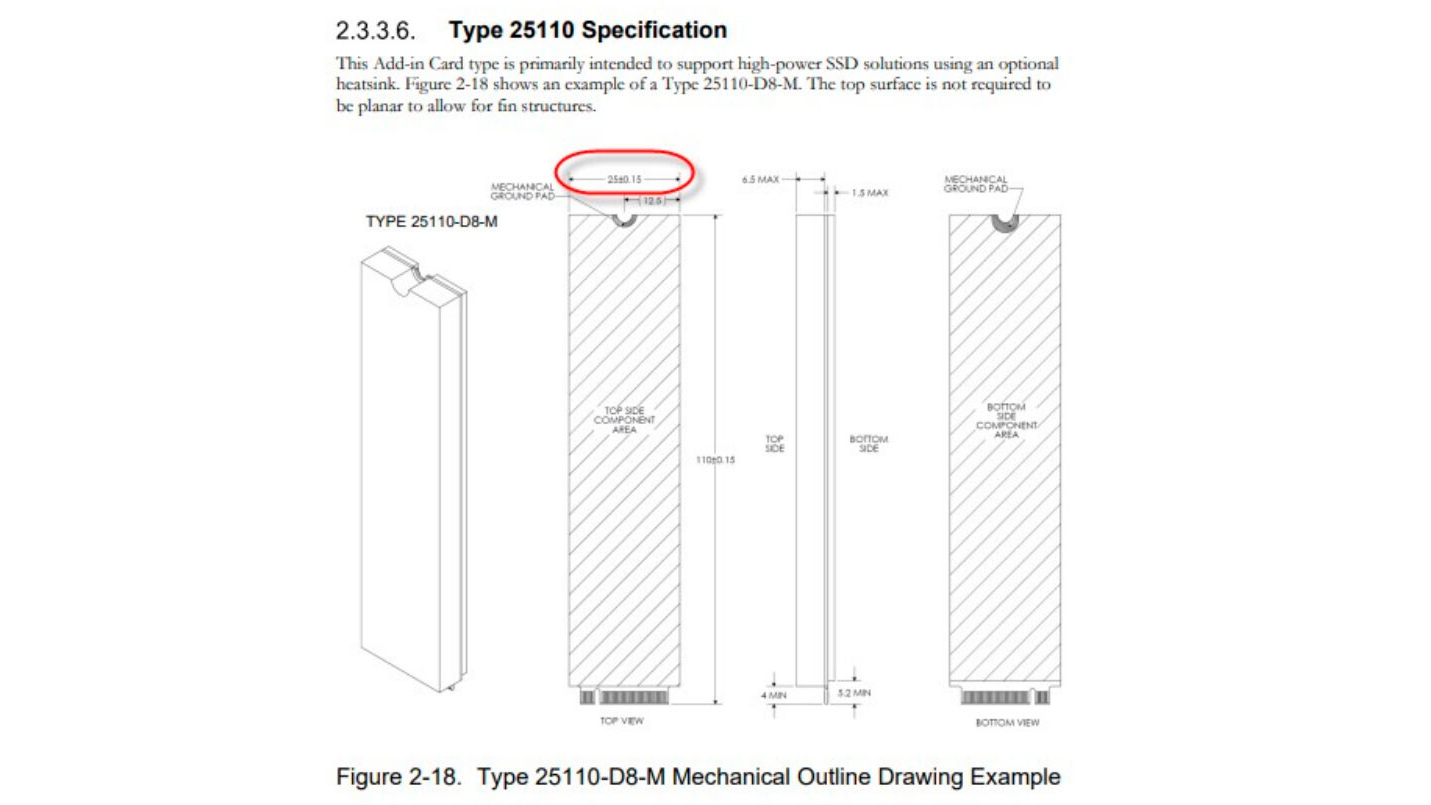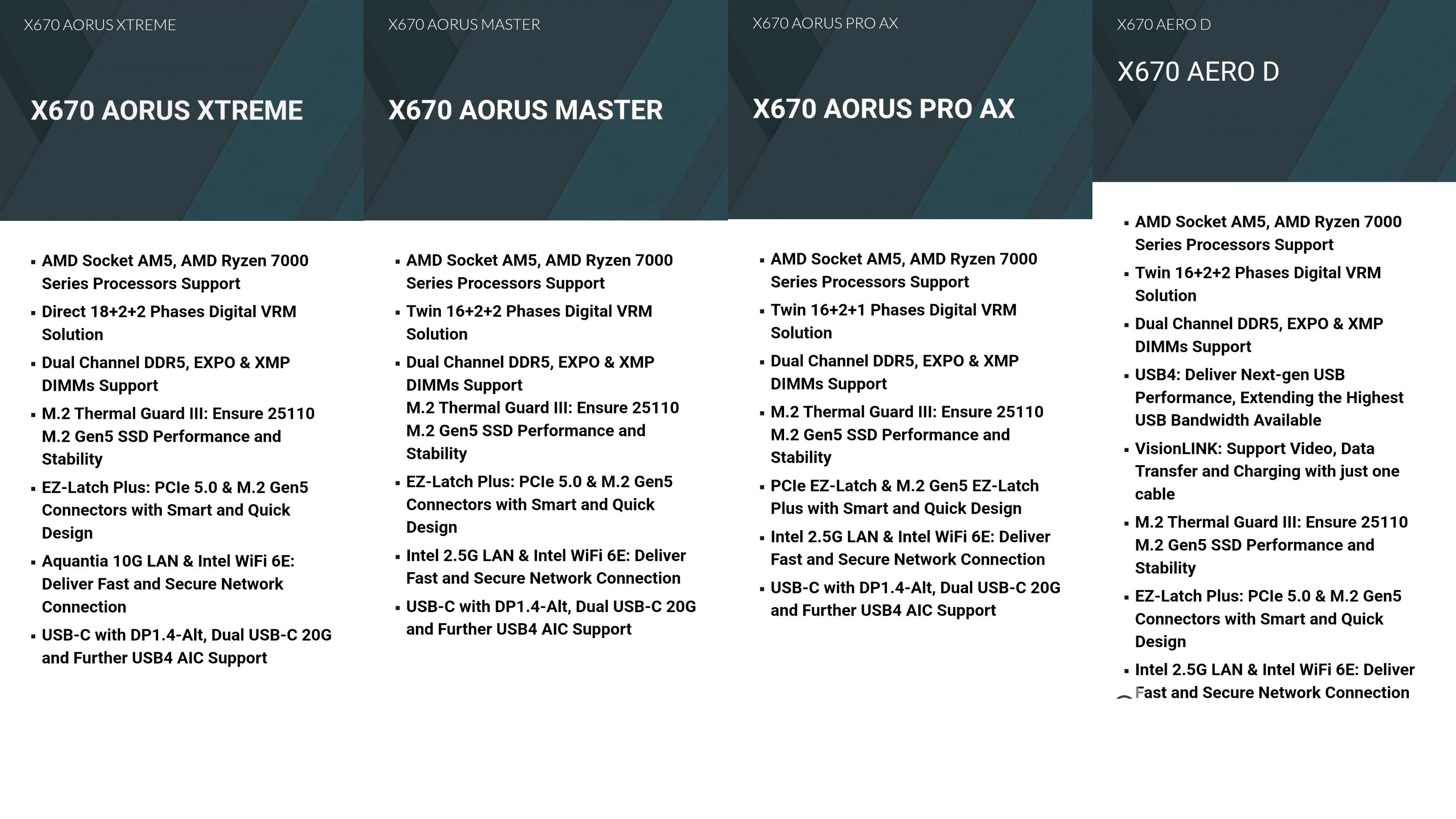PCIe 5.0 SSDs May Get Wider and Require Wider M.2 Slots
Intel's 12th Generation Alder Lake and AMD's Ryzen 7000 (Raphael) processors kicked off the launch of PCIe 5.0 SSDs that deliver blistering storage performance. The new and speedy drives will undoubtedly find a spot on the list of best SSDs but could potentially require a wider M.2 slot.
M.2 SSDs come in different sizes. However, we're accustomed to seeing SSDs arrive in the 2280 form factor in the mainstream market. The first two digits denote width, while the other digits correspond to the length. Therefore, an M.2 2280 drive measures 22 x 80mm. It's the most common form factor that you'll find inside a consumer system.
The M.2 standard always had provisions for wider devices, including 12 mm, 16 mm, 22 mm or 30 mm. We have the established 16 mm, 26 mm, 30 mm, 42 mm, 60 mm, 80 mm and 110 mm sizes for length. Mainstream M.2 SSDs typically stick to 80 mm. You usually don't find 30 mm-wide or 110 mm-long drives outside the enterprise or server market. Nonetheless, many high-end consumer motherboards have at least one M.2 slot that can accommodate drives up to 110 mm, or 22110.
Twitter user Hassan Mujtaba shared the alleged specifications for Gigabyte's X670 Aorus Pro AX, X670 Aorus Master, X670 Aorus Xtreme, and X670 Aero D motherboards. They read, in part: "M.2 Thermal Guard III: Ensure 25110 M.2 Gen5 SSD Performance and Stability." It implies that some PCIe 5.0 drives may be 25 mm wide and won't fit into existing motherboards with M.2 slots. However, it isn't a big deal if we look at it objectively since no one in the right mind would pay for a premium PCIe 5.0 SSD and cripple its performance on an older motherboard. Assuming companies designed their M.2 slots with some headroom, we don't see the additional 3 mm being a problem.


TechPowerUp has shared the mechanical drawings for the "Type 25110-D8-M" form factor, the standard quoted on Gigabyte's materials. According to the publication, PCI-SIG silently slipped in the 25 mm width at the end of 2020 but didn't divulge it. The description from the document says the "Add-in Card type is primarily intended to support high-power SSD solutions using an optional heatsink." Compared to 22 mm drives, an extra 3 mm may not sound like much. Increasing the PCB wideness by 1.5mm on each side will not likely allow manufacturers to put more NAND chips on it. Besides, we've seen SSDs as large as 8TB, like Sabrent's Rocket Q, that happily fit on a 2280 form factor. However, more landscape could help with heat dissipation and allow vendors to make more robust heatsinks.
We don't expect every PCIe 5.0 SSD to adhere to the 25110 form factor. In Gigabyte's case, the manufacturer probably wanted to future-proof its X670 motherboards for 25110 drives. Conventional 2280 SSDs should still fit the wider M.2 slots without problems. Furthermore, Intel 600-series motherboards with PCIe 5.0 support have been shipping for months now with only M.2 2280 and 22110 slots.
Apacer and Zadak have already announced their PCIe 5.0 SSDs with impressive sequential read and write speeds up to 13,000 MBps and 12,000 MBps, respectively. Unfortunately, the vendors didn't specify whether they were standard 22 mm-wide drives. It'll be interesting to see which brands jump on the 25 mm bandwagon in the upcoming and whether the actual increase in width brings any benefits.
Get Tom's Hardware's best news and in-depth reviews, straight to your inbox.

Zhiye Liu is a news editor, memory reviewer, and SSD tester at Tom’s Hardware. Although he loves everything that’s hardware, he has a soft spot for CPUs, GPUs, and RAM.
-
Kamen Rider Blade IMO, the 110 mm Length should be reserved for Enterprise-Only solutions.Reply
99mm should be added as the new consumer "Maximum" Length for M.2 drives. -
InvalidError "Nobody in their right mind would buy a 5.0 drive to cripple it on an older motherboard."Reply
Only for now. 3-4 years down the line, there won't be much of a price premium left to 5.0 over 4.0 just like there isn't much of a premium left to 4.0 over 3.0 today for the shrinking number of nearest equivalents available in both flavors.
BTW, just looked up WD's 1TB SN750 (I have the 500GB model in my PC) vs SN770 and the 4.0x4 SN770 is actually $5 cheaper at my local store. -
Alvar "Miles" Udell ReplyHowever, it isn't a big deal if we look at it objectively since no one in the right mind would pay for a premium PCIe 5.0 SSD and cripple its performance on an older motherboard.
Wow, really? Not like people would ever get a PCIe 5.0 drive if the price difference between it and a 4.0 drive is small, or even not so small, so when they upgrade later they will already have PCIe 5.0. -
USAFRet And with PCIe 5.0, maybe we'll see even less of the minimal difference between 3.0 and 4.0.Reply
We are deep into diminishing returns.
5.0 drives will eventually become the norm (as did 3.0 and soon 4.0), but the rest of the system has a lot of control over how "fast" things are.
Sometime soon, someone will be wanting to forcefit a PCIe 5.0 drive into a i7-2600 system, and wondering why it isn't getting uber speed. -
InvalidError Reply
Mainly because mainstream has little to no use for it yet. If games ever evolve to pervasive use of DirectStorage, it may become essential to smooth gaming experience and mostly eliminating loading screens.USAFRet said:And with PCIe 5.0, maybe we'll see even less of the minimal difference between 3.0 and 4.0.
We are deep into diminishing returns. -
kjfatl Did I miss something? The headline of the article indicated that the SSD's would be getting thicker. Then the article talks about wider PCB, but the thickness of the PCB was not addressed. A thicker PCB would require a new type of connector and would likely be incompatible with current generation m.2 cards. A thicker CCA would improve signal quality etc..Reply -
USAFRet Reply
Right.InvalidError said:Mainly because mainstream has little to no use for it yet. If games ever evolve to pervasive use of DirectStorage, it may become essential to smooth gaming experience and mostly eliminating loading screens.
Other parts of the ecosystem need to change before it becomes beneficial. -
Co BIY Replykjfatl said:Did I miss something? The headline of the article indicated that the SSD's would be getting thicker. Then the article talks about wider PCB, but the thickness of the PCB was not addressed. A thicker PCB would require a new type of connector and would likely be incompatible with current generation m.2 cards. A thicker CCA would improve signal quality etc..
Agreed, I read it as you did. Although I assumed the thicker dimension would be the space between the card and MB to allow more heat sink on the bottom of the card.
But viewing the M.2 card vertically (like a supermodel) then wider does equal thicker. -
InvalidError Reply
PCB thickness doesn't have much of an effect on signal integrity as long as it is thick enough to accommodate whatever number of ground and power planes are necessary to provide signal traces with continuous reference planes and uniform impedance. Also, since the NVMe controller is almost butting against the NVMe connector, there isn't much of a PCB between the card edge connector and controller to affect anything.kjfatl said:A thicker CCA would improve signal quality etc..
Slapping a heatsink on the bottom is silly as it wouldn't have any airflow to get the heat off. The few studies I have seen about NAND vs temperature say NAND doesn't require cooling except for long-term off-line storage where you lose approximately half of the data retention time for every 10C above 25C. The controller is the only part that really requires cooling so it doesn't end up cooking itself and nearby NAND.Co BIY said:Agreed, I read it as you did. Although I assumed the thicker dimension would be the space between the card and MB to allow more heat sink on the bottom of the card. -
USAFRet Wider, not thicker.Reply
Currently, 2280
22mm wide, 80mm long
Proposed, 25110
25mm wide, 110mm long